R E S T O R A T I O N
G A L L E R Y
Difficult Restoration No. 3

As received in my shop, this beleaguered Estey Chapel of 1883 had clearly seen better days!

The rear view shows what was left of the back, and reveals some suspicious "gnawing" at the support frames.
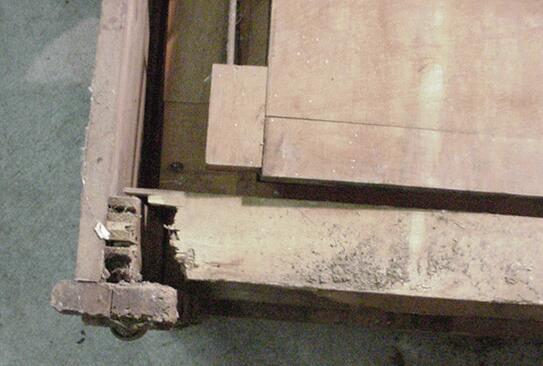
When removed from the case, the under-side of the foundation board shows evidence of termites! More termite damage and a broken frame member were found as dismantling progressed.
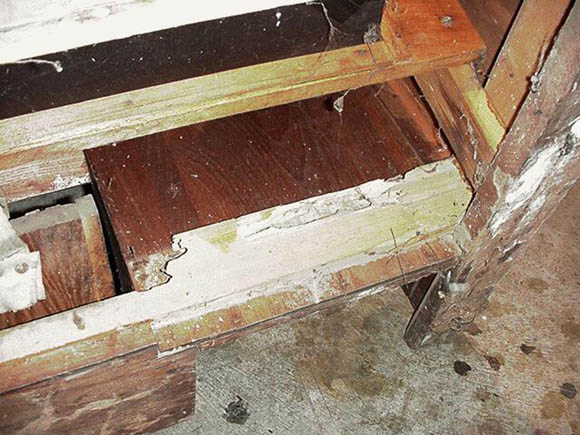
Once I really "got into it," it became clear many termites had been there before me. In fact, the softwood frames were beyond hope, although the critters had spared the walnut case itself.

It was necessary, therefore to make new frames, which meant dismantling the entire case.

Old and new bottom frames are shown side-by-side.

Here, the new frames have been installed, and the case is going back together.

Repairing the lower action was straightforward.
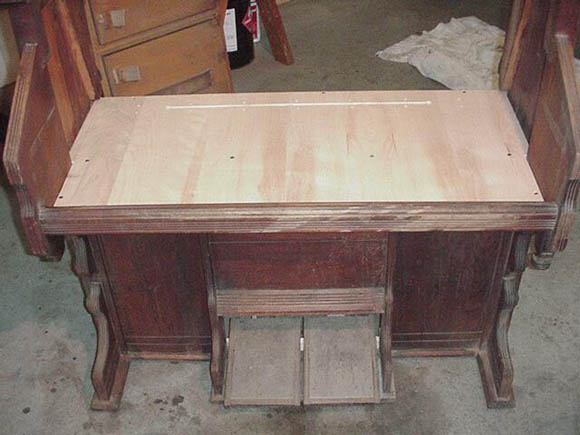
However, the foundation had to be replaced, as termites had eaten away enough of it to prevent a proper seal.

The upper action had to be refurbished next. Freshly removed from the case, it looked pretty sad.
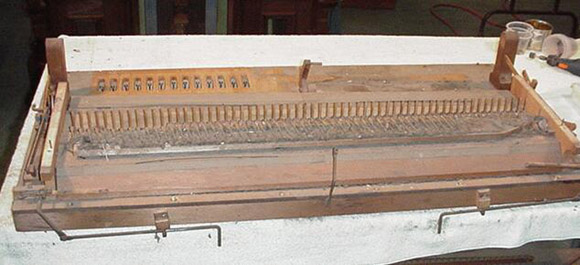
Here, the keyboard and sub-bass have been removed.

The coupler action came into view under vast quantities of detritus: note the walnut shells left by an itinerant squirrel along the way.



The upper action going back together looks quite a bit different!

But the real challenge was that coupler action, with its heavily rusted metal parts and missing bushings. There all those parts are, cleaned and ready to re-assemble.
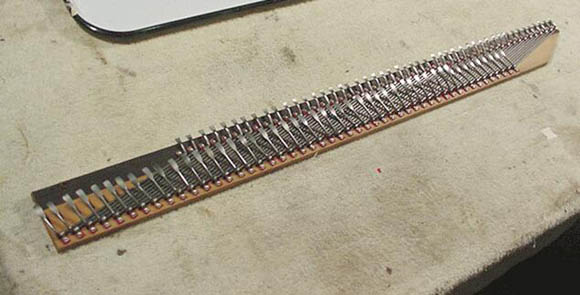
Completed, the stack looked like this.

Back on the action, it looked like this.


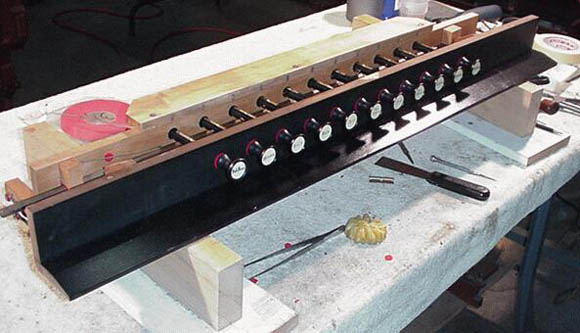
Then there was the stop action to take apart and reassemble.

The upper action, shown on the tuning table, had been assembled without the swells, to facilitate easy access to reeds for tuning.

The completed organ actually looked pretty good, and sounded wonderful. It brought tears to its owner's eyes: as a young girl she had played it in her grandmother's home, but had not heard it in more than 50 years.
|